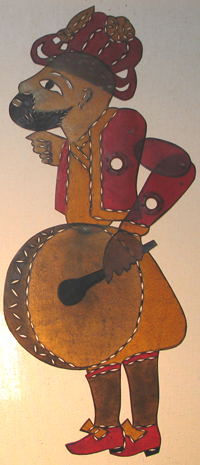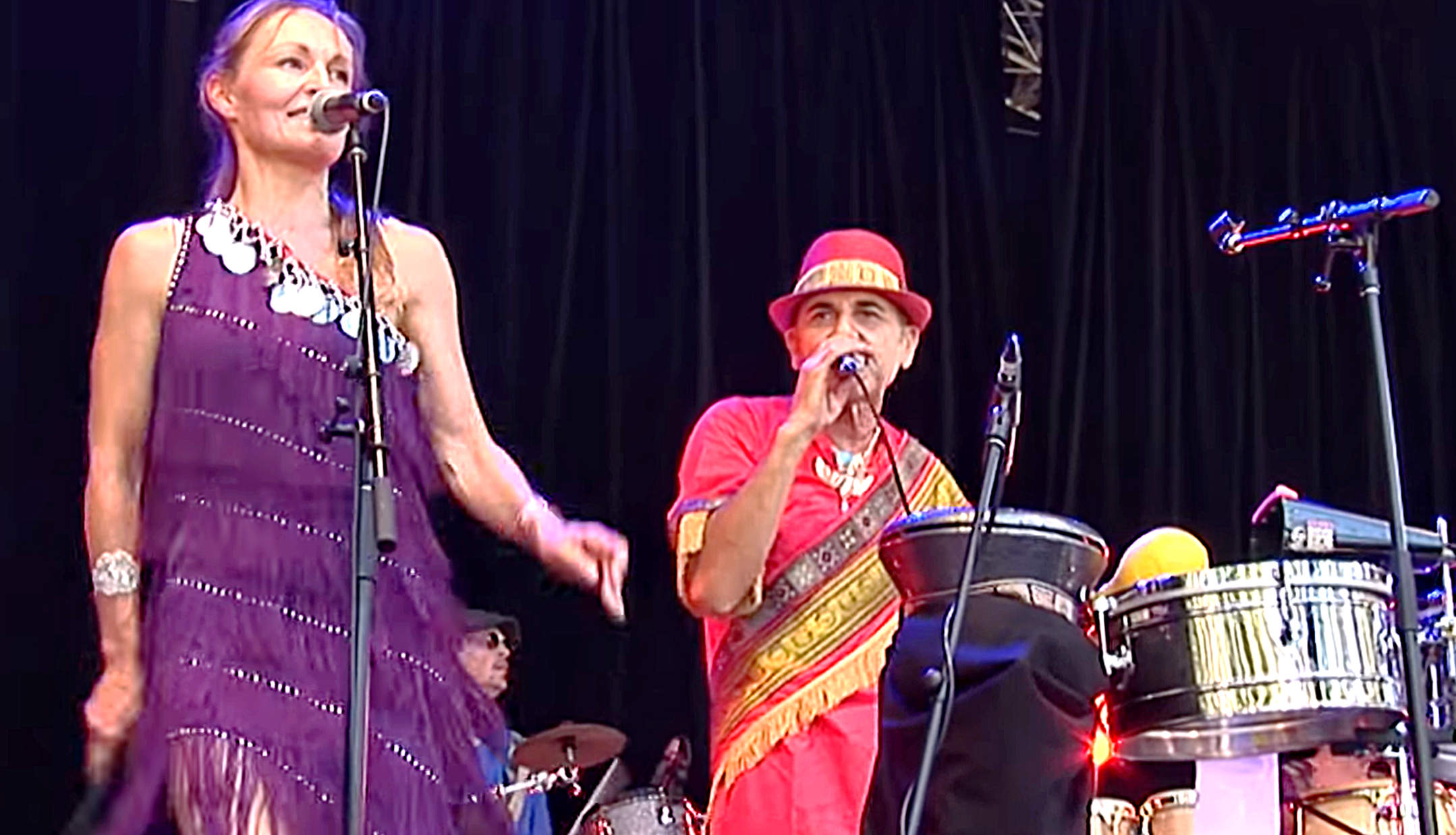|
Zurna
The zurna is a double reed wind instrument played in Central Asia, West Asia, the Caucasus, Southeast Europe and parts of North Africa. It is also used in Sri Lanka. It is usually accompanied by a davul (bass drum) in Armenian, Anatolian and Assyrian folk music. The zurna is largely played in Turkey. Etymology and terminology A folk etymology explains that the name is derived from Persian "" (''surnāy''), composed of "" (''sūr'') meaning "banquet, feast", and (''nāy'') meaning "reed, pipe". The term is attested in the oldest Turkic records, as "''suruna''" in the 12th and 13th century Codex Cumanicus (CCM fol. 45a). Zurna has also been suggested as a possible borrowing from Hittite or Luwian into the Armenian language, where Arm. զուռնա ''zuṙna'' is compared to Luwian ''zurni'' "horn". Origins The zurna was said to originate from Central Asia and ancient Asia Minor (Anatolia). Images of the zurna are visible in stone reliefs and artwork by the Hittites, who wer ... [...More Info...] [...Related Items...] OR: [Wikipedia] [Google] [Baidu] |
Davul
The davul, dhol, tapan, atabal or tabl is a large double-headed drum that is played with mallets. It has many names depending on the country and region. These drums are commonly used in the music of the Middle East and the Balkans. These drums have both a deep bass drum, bass sound and a thin treble (sound), treble sound due to their construction and playing style, where different heads and sticks are used to produce different sounds on the same drum. Names Some names of davuls include: *''dhol'' () *''dawola/tabla'' () *''dohol'' () *''doli'' ( ka, დოლი doli) *''davul'' () *''dahol'' (, ) *''davil'' () *''davula'' (Sinhala language, Sinhala: දවුල) *''tupan'' (Gora dialect, Goranian: tupan) *''daul'', ''tǎpan'', ''tupan'' () *''goč'', ''tapan'', ''tupan'' () *''tapan, tupan'' () *''tobă/dobă'' () *''tabl'' ( or ''tabl baladi'') *''tof'' () *''taoul(in)'' () *''lodra'', ''tupana'', ''daulle'', ''taborre'' () *''moldvai dob'' () Other Greek language, Greek ... [...More Info...] [...Related Items...] OR: [Wikipedia] [Google] [Baidu] |
Assyrian Folk/pop Music
Assyrian folk/pop music, also known as Assyrian folk-pop, is the musical style of the Assyrian people derived from traditional music that includes a broad range of stylistic varieties, which would also encompass fusions of Western genres such as pop, electronic, Latin, jazz and/or classical music, with a melodic basis of Assyrian folk. Background Assyrian folk music claims to be the descendant of the music of their ancient Upper Mesopotamian ancestors that has survived in the liturgical music of the Syriac Churches. Assyrian songs are generally sung in Iraqi Koine, a standard variety of Assyrian Neo-Aramaic. However, older songs mostly had an Urmian dialect and tribal-folk music tend to contain Tyari dialects. Themes tend to focus on longing, melancholy, strife and love issues. Assyrian songs are usually lengthy, tending to be around 5 minutes long on average. Composition Assyrian folk can also be found in traditional Middle Eastern makams, and it has similarities to other ... [...More Info...] [...Related Items...] OR: [Wikipedia] [Google] [Baidu] |
Music Of Armenia
The music of Armenia ( ''haykakan yerazhshtut’yun'') has its origins in the Armenian highlands, dating back to the 3rd millennium BC, 3rd millennium Common Era, BCE, and is a long-standing musical tradition that encompasses diverse secular and religious, or sacred, music (such as the ''sharakan'' Armenian chant and ''taghs'', along with the indigenous ''Khaz (notation), khaz'' musical notation). Folk music was notably collected and transcribed by Komitas Vardapet, a prominent composer and Musicology, musicologist, in the late 19th and early 20th centuries, who is also considered the founder of the modern Armenian national school of music. Armenian music has been presented internationally by numerous artists, such as composers Aram Khachaturian, Alexander Arutiunian, Arno Babajanian, Haig Gudenian, and Karen Kavaleryan as well as by Folk music, traditional performers such as duduk player Djivan Gasparyan. Melodic basis Traditional Armenian folk music as well as Armenian chur ... [...More Info...] [...Related Items...] OR: [Wikipedia] [Google] [Baidu] |
Double Reed
A double reed is a type of reed used to produce sound in various wind instruments. In contrast with a single reed instrument, where the instrument is played by channeling air against one piece of cane which vibrates against the mouthpiece and creates a sound, a double reed features two pieces of cane vibrating against each other. This means, for instruments with the double reed fully exposed, that the air flow can be controlled by the embouchure from the top, bottom and sides of the reed. The term ''double reeds'' can also refer collectively to the class of instruments which use double reeds. Structure and dimensions The size and shape of the reed depend on the type of double-reed instrument which is of two groups, conical and cylindrical. Even within families of instruments, for example, the oboe family, the reed for the oboe is quite different from that for the cor anglais (English horn). Oboe reeds are usually 7 mm (0.3 in) in width, while bassoon reeds are wider, from ... [...More Info...] [...Related Items...] OR: [Wikipedia] [Google] [Baidu] |
YouTube
YouTube is an American social media and online video sharing platform owned by Google. YouTube was founded on February 14, 2005, by Steve Chen, Chad Hurley, and Jawed Karim who were three former employees of PayPal. Headquartered in San Bruno, California, it is the second-most-visited website in the world, after Google Search. In January 2024, YouTube had more than 2.7billion monthly active users, who collectively watched more than one billion hours of videos every day. , videos were being uploaded to the platform at a rate of more than 500 hours of content per minute, and , there were approximately 14.8billion videos in total. On November 13, 2006, YouTube was purchased by Google for $1.65 billion (equivalent to $ billion in ). Google expanded YouTube's business model of generating revenue from advertisements alone, to offering paid content such as movies and exclusive content produced by and for YouTube. It also offers YouTube Premium, a paid subs ... [...More Info...] [...Related Items...] OR: [Wikipedia] [Google] [Baidu] |
Anatolia
Anatolia (), also known as Asia Minor, is a peninsula in West Asia that makes up the majority of the land area of Turkey. It is the westernmost protrusion of Asia and is geographically bounded by the Mediterranean Sea to the south, the Aegean Sea to the west, the Turkish Straits to the northwest, and the Black Sea to the north. The eastern and southeastern limits have been expanded either to the entirety of Asiatic Turkey or to an imprecise line from the Black Sea to the Gulf of Alexandretta. Topographically, the Sea of Marmara connects the Black Sea with the Aegean Sea through the Bosporus and the Dardanelles, and separates Anatolia from Thrace in Southeast Europe. During the Neolithic, Anatolia was an early centre for the development of farming after it originated in the adjacent Fertile Crescent. Beginning around 9,000 years ago, there was a major migration of Anatolian Neolithic Farmers into Neolithic Europe, Europe, with their descendants coming to dominate the continent a ... [...More Info...] [...Related Items...] OR: [Wikipedia] [Google] [Baidu] |
Sri Lanka
Sri Lanka, officially the Democratic Socialist Republic of Sri Lanka, also known historically as Ceylon, is an island country in South Asia. It lies in the Indian Ocean, southwest of the Bay of Bengal, separated from the Indian subcontinent, Indian peninsula by the Gulf of Mannar and the Palk Strait. It shares a maritime border with the Maldives in the southwest and India in the northwest. Sri Jayawardenepura Kotte is the legislative capital of Sri Lanka, while the largest city, Colombo, is the administrative and judicial capital which is the nation's political, financial and cultural centre. Kandy is the second-largest urban area and also the capital of the last native kingdom of Sri Lanka. The most spoken language Sinhala language, Sinhala, is spoken by the majority of the population (approximately 17 million). Tamil language, Tamil is also spoken by approximately five million people, making it the second most-spoken language in Sri Lanka. Sri Lanka has a population of appr ... [...More Info...] [...Related Items...] OR: [Wikipedia] [Google] [Baidu] |
North Africa
North Africa (sometimes Northern Africa) is a region encompassing the northern portion of the African continent. There is no singularly accepted scope for the region. However, it is sometimes defined as stretching from the Atlantic shores of the Western Sahara in the west, to Egypt and Sudan's Red Sea coast in the east. The most common definition for the region's boundaries includes Algeria, Egypt, Libya, Morocco, Tunisia, and Western Sahara, the territory territorial dispute, disputed between Morocco and the list of states with limited recognition, partially recognized Sahrawi Arab Democratic Republic. The United Nations’ definition includes all these countries as well as Sudan. The African Union defines the region similarly, only differing from the UN in excluding the Sudan and including Mauritania. The Sahel, south of the Sahara, Sahara Desert, can be considered as the southern boundary of North Africa. North Africa includes the Spanish cities of Ceuta and Melilla, and the ... [...More Info...] [...Related Items...] OR: [Wikipedia] [Google] [Baidu] |
Southeast Europe
Southeast Europe or Southeastern Europe is a geographical sub-region of Europe, consisting primarily of the region of the Balkans, as well as adjacent regions and Archipelago, archipelagos. There are overlapping and conflicting definitions of the region, due to political, economic, historical, cultural, and geographical considerations. Sovereign state, Sovereign states and territories that may be included in the region are Albania, Bosnia and Herzegovina, Bulgaria, Croatia (alternatively placed in Central Europe), Greece (alternatively placed in the broader region of Southern Europe), Kosovo, Montenegro, North Macedonia, Romania (alternatively placed in Eastern Europe), Serbia, and the East Thrace, European part of Turkey (alternatively placed in the broader region of Southern Europe, also in West Asia, Western Asia with the rest of the country). Sometimes, Cyprus (most often placed in West Asia), Hungary (most often placed in Central Europe), Moldova (most often placed in Easte ... [...More Info...] [...Related Items...] OR: [Wikipedia] [Google] [Baidu] |
Caucasus
The Caucasus () or Caucasia (), is a region spanning Eastern Europe and Western Asia. It is situated between the Black Sea and the Caspian Sea, comprising parts of Southern Russia, Georgia, Armenia, and Azerbaijan. The Caucasus Mountains, including the Greater Caucasus range, have conventionally been considered as a natural barrier between Europe and Asia, bisecting the Eurasian landmass. Mount Elbrus, Europe's highest mountain, is situated in the Western Caucasus area of Russia. On the southern side, the Lesser Caucasus includes the Javakheti Plateau and the Armenian highlands. The Caucasus is divided into the North Caucasus and South Caucasus, although the Western Caucasus also exists as a distinct geographic space within the North Caucasus. The Greater Caucasus mountain range in the north is mostly shared by Russia and Georgia as well as the northernmost parts of Azerbaijan. The Lesser Caucasus mountain range in the south is mostly located on the territory of sout ... [...More Info...] [...Related Items...] OR: [Wikipedia] [Google] [Baidu] |






